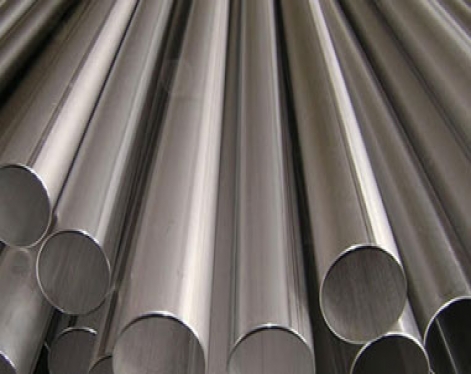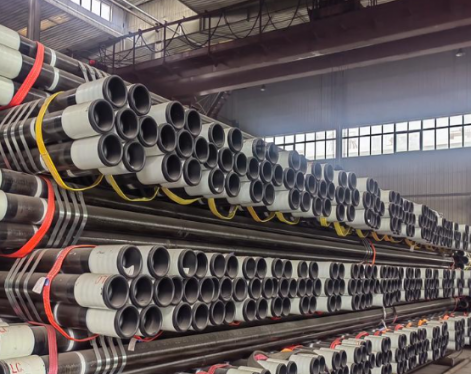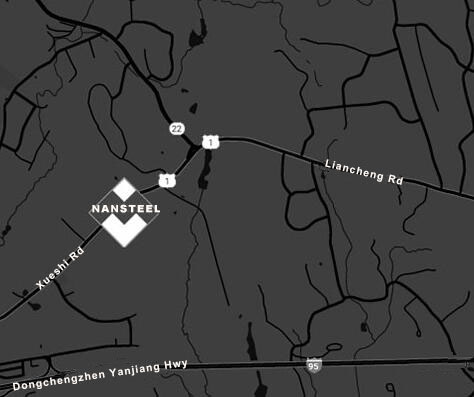When selecting the right type of steel pipe for your project, understanding the differences between ERW (Electric Resistance Welded) pipe and CEW (Cold Drawn Electric Welded) pipe is essential. Both are widely used in structural and mechanical applications, but they differ in manufacturing processes, mechanical properties, and end-use suitability.
What is ERW Pipe?
ERW pipes are produced by forming metal into a tube and welding it along the length using high-frequency electric resistance. The weld is heat-treated for a consistent structure. These pipes are cost-effective, easy to manufacture, and ideal for medium-pressure uses like:
1. Water and gas lines
2. Scaffolding
3. Fencing and framing

What is CEW Pipe?
CEW pipes are ERW pipes that are further processed through cold drawing to improve accuracy, surface finish, and strength. This process enhances the grain structure, making CEW pipes ideal for:
1. Precision automotive and engineering parts
2. Hydraulic and pneumatic systems
3. Shock absorbers and cylinder tubes
Process principle comparison:ERW pipe vS. CEW pipe
ERW Pipe (electric resistance welded pipe)
Alternating current is introduced into the edge of the steel pipe through electrodes, and the metal's own resistance is used to generate Joule heat to make the edge plastic, and then pressure is applied by the extrusion roller to complete the welding. During the welding process, the current path is wide and the heat affected zone (HAZ) is relatively large, and subsequent annealing treatment is usually required to eliminate stress.
CEW Pipe (High Frequency Contact Welded Pipe)
Uses high frequency current (usually 100-500kHz) to act directly on the edge of the tube through the contact electrode. The skin effect of the current concentrates the heat in the area to be welded. The heat affected zone is extremely narrow (only 0.1-0.5mm). No additional heat treatment is required after welding, and the weld is
more refined.
Key performance differences: ERW pipe vS. CEW pipe
Weld quality
ERW: The weld strength can reach 85%-90% of the parent material, with a small amount of slag, and internal defects need to be detected through online flaw detection.
CEW: The weld purity is higher, and the strength is close to the parent material (more than 95%). Due to the small heat-affected zone, the fatigue resistance is better.
Dimensional accuracy
ERW: outer diameter tolerance ±0.5mm, wall thickness tolerance ±10%, suitable for general engineering pipes.
CEW: outer diameter tolerance ±0.2mm, wall thickness tolerance ±5%, can meet the stringent dimensional requirements of precision machinery.
Production efficiency and cost
ERW: welding speed is 20-60 m/min, equipment investment is low, suitable for large-scale conventional specification production.
CEW: welding speed can reach 80-150 m/min, but the high-frequency equipment cost is high, and the economic efficiency of small-scale production is poor.
Which One Should You Choose?
The choice between ERW and CEW pipes depends on your specific application needs.
Choose ERW pipes if you require high-volume production at a lower cost, and the application involves moderate pressure and standard dimensional tolerances. They are ideal for general structural use, water and gas distribution, and construction frameworks where precision is not the top priority.
On the other hand, opt for CEW pipes when your project demands high precision, superior mechanical strength, and a smooth surface finish. These pipes are best suited for automotive components, hydraulic cylinders, and engineering systems where performance and accuracy are critical.
In summary:
Use ERW for cost-efficiency and high output in standard applications.
Choose CEW for precision and strength in more demanding, high-performance environments.
Read more: How to Extend the Service Life of ERW Pipe?
What is ERW Pipe?
ERW pipes are produced by forming metal into a tube and welding it along the length using high-frequency electric resistance. The weld is heat-treated for a consistent structure. These pipes are cost-effective, easy to manufacture, and ideal for medium-pressure uses like:
1. Water and gas lines
2. Scaffolding
3. Fencing and framing

What is CEW Pipe?
CEW pipes are ERW pipes that are further processed through cold drawing to improve accuracy, surface finish, and strength. This process enhances the grain structure, making CEW pipes ideal for:
1. Precision automotive and engineering parts
2. Hydraulic and pneumatic systems
3. Shock absorbers and cylinder tubes
Process principle comparison:ERW pipe vS. CEW pipe
ERW Pipe (electric resistance welded pipe)
Alternating current is introduced into the edge of the steel pipe through electrodes, and the metal's own resistance is used to generate Joule heat to make the edge plastic, and then pressure is applied by the extrusion roller to complete the welding. During the welding process, the current path is wide and the heat affected zone (HAZ) is relatively large, and subsequent annealing treatment is usually required to eliminate stress.
CEW Pipe (High Frequency Contact Welded Pipe)
Uses high frequency current (usually 100-500kHz) to act directly on the edge of the tube through the contact electrode. The skin effect of the current concentrates the heat in the area to be welded. The heat affected zone is extremely narrow (only 0.1-0.5mm). No additional heat treatment is required after welding, and the weld is
more refined.
Key performance differences: ERW pipe vS. CEW pipe
Weld quality
ERW: The weld strength can reach 85%-90% of the parent material, with a small amount of slag, and internal defects need to be detected through online flaw detection.
CEW: The weld purity is higher, and the strength is close to the parent material (more than 95%). Due to the small heat-affected zone, the fatigue resistance is better.
Dimensional accuracy
ERW: outer diameter tolerance ±0.5mm, wall thickness tolerance ±10%, suitable for general engineering pipes.
CEW: outer diameter tolerance ±0.2mm, wall thickness tolerance ±5%, can meet the stringent dimensional requirements of precision machinery.
Production efficiency and cost
ERW: welding speed is 20-60 m/min, equipment investment is low, suitable for large-scale conventional specification production.
CEW: welding speed can reach 80-150 m/min, but the high-frequency equipment cost is high, and the economic efficiency of small-scale production is poor.
Which One Should You Choose?
The choice between ERW and CEW pipes depends on your specific application needs.
Choose ERW pipes if you require high-volume production at a lower cost, and the application involves moderate pressure and standard dimensional tolerances. They are ideal for general structural use, water and gas distribution, and construction frameworks where precision is not the top priority.
On the other hand, opt for CEW pipes when your project demands high precision, superior mechanical strength, and a smooth surface finish. These pipes are best suited for automotive components, hydraulic cylinders, and engineering systems where performance and accuracy are critical.
In summary:
Use ERW for cost-efficiency and high output in standard applications.
Choose CEW for precision and strength in more demanding, high-performance environments.
Read more: How to Extend the Service Life of ERW Pipe?









